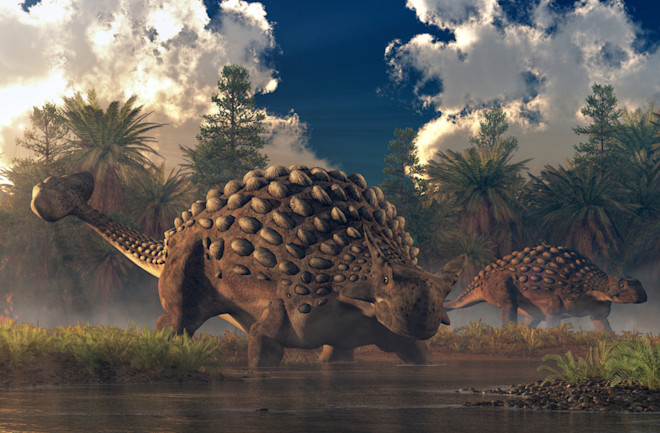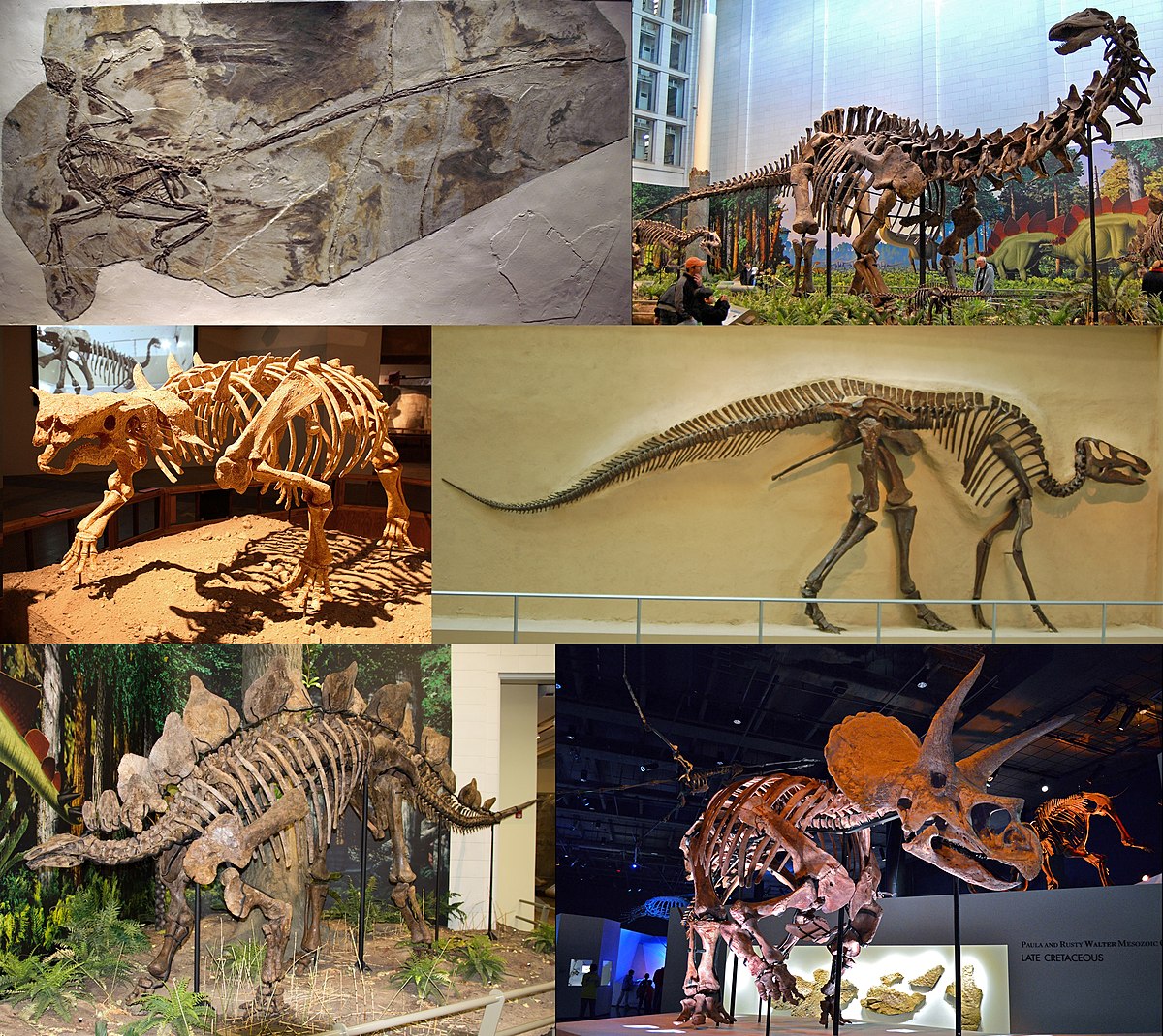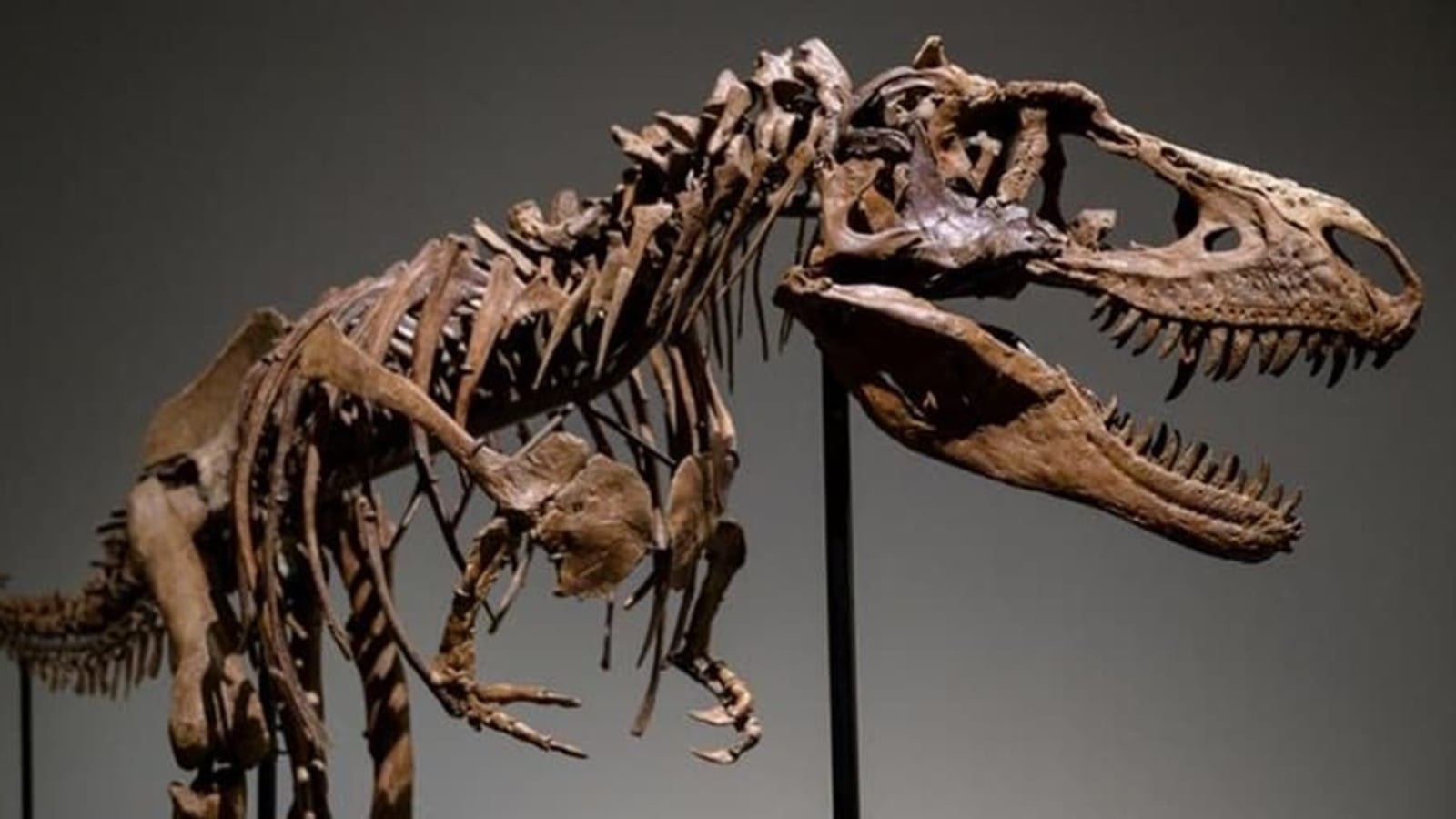Archaeologists unearthed a type of ankylosaur in 2011 with its spikes, armor and skin intact on its face.

Image of a pair of ankylosaurs with spiky armor on their backs. (Credit: Daniel Eskridge/Shutterstock)NewsletterSign up for our email newsletter for the latest science news
Fossilized dinosaur bones are still a somewhat common find, mainly because of how long dinosaurs roamed the Earth. What’s far more unheard of, however, is fossilized dinosaur skin.

In 2011, archaeologists unearthed a near-complete Borealopelta markmitchelli, a type of four-legged ankylosaur fossil. The fossil preserved some of its spikes, armor, stomach contents and most importantly, the skin on its face. Now, multiple studies have examined the fossil, revealing new details about the dinosaur that once roamed our planet.

A common form of fossilization can occur when sediment, typically either sand or silt, buries an animal that has died. Once buried, the body decomposes, but the animal’s bones are protected from the sediment elements. Then, over millions of years, minerals slowly replace the bones in the surrounding rock. What’s left over is a copy of the original bones.
The 2011 ankylosaur was not found under sediment, though. Rather, this fossil was found in what was once a deep ocean — an open-pit mine in Alberta, Canada. Scientists hypothesize that the animal likely died in a river and was then carried out to sea in a flooding event. Once there, the gasses that built up in its body after death dissipated, and the ankylosaur sank to the ocean floor.
Read More: The First Ever Dinosaur Discovery: The Megalosaurus
Modelling by Dr. Donald Henderson, the curator of dinosaurs at the Royal Tyrell Museum in Alberta, suggests that the dinosaur’s thick coat of armor may have prevented sea-based predators from eating away at its remains.
Scientists have found other land-based dinosaurs fossilized in this manner, but none as well preserved as the ankylosaur. Henderson claims this may be because the ankylosaur’s final resting place was in an environment that discouraged scavenging.
“It was probably a region where [long-necked] plesiosaurs and big fish didn’t like to go,” said Henderson in an interview with Ars. “It was just a nice set of conditions in the seabed that had very low biological activity that led to that preservation.”
Fossil Significance

As of early 2023, multiple studies have examined the pristine ankylosaur fossil to learn more about what the dinosaur was like when it was alive.
The first study, led by Caleb Brown, a curator at the Royal Tyrell Museum, evaluated the spike-like bone structures that covered the back of the ankylosaur.
Because of the fossil condition, Brown could examine each bone structure (172 of them, to be exact). His study revealed that these structures weren’t meant to keep predators away, but instead attracted potential mates.
Previous evidence also reveals that specific spikes may have been pigmented differently than others. That evidence, combined with new findings, “suggests this spine may have function as a visual socio-sexual display signal with conspecifics,” according to the authors in the study.
A second study, conducted by Brown and his colleagues, looked into the ankylosaur fossil’s preserved stomach contents. Its stomach was full of prehistoric leaves at the time of death, meaning the dinosaur had an herbivorous diet. Additionally, the contents suggest that the ankylosaur was engaging in selective feeding, meaning it was picking and choosing what it ate.
Perhaps most importantly, a final study on the fossil revealed that the ankylosaur engaged in what’s known as countershading. It’s a form of camouflage that’s seen in many animals today, such as gazelles. The idea that a big creature like an ankylosaur had to engage in camouflage indicates just how hostile the world around it was.
source:discovermagazine







